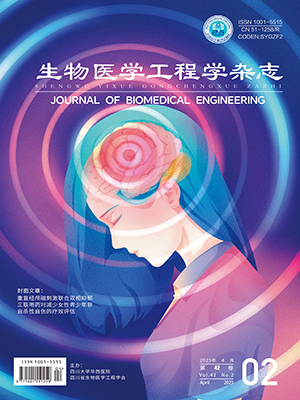Optical coherence tomography (OCT) has become a key technique in the diagnosis of coronary artery stenosis, which can identify plaques and vulnerable plaques in the image. Therefore, this technique is of great significance for the diagnosis of coronary heart disease. However, there is still a lack of automatic, multi-region, high-precision segmentation algorithms for coronary OCT images in the current research field. Therefore, this paper proposes a multi-zone, fully automated segmentation algorithm for coronary OCT images based on neutrosophic theory, which achieves high-precision segmentation of fibrous plaques and lipid regions. In this paper, the method of transforming OCT images into T in the area of neutrosophics is redefined based on the membership function, and the segmentation accuracy of fiber plaques is improved. For the segmentation of lipid regions, the algorithm adds homomorphic filter enhancement images, and uses OCT to transform OCT images into I in the field of neutrosophics, and further uses morphological methods to achieve high-precision segmentation. In this paper, 40 OCT images from 9 patients with typical plaques were analyzed and compared with the results of manual segmentation by doctors. Experiments show that the proposed algorithm avoids the over-segmentation and under-segmentation problems of the traditional neutrosophic theory method, and accurately segment the patch area. Therefore, the work of this paper can effectively improve the accuracy of segmentation of plaque for doctors, and assist clinicians in the diagnosis and treatment of coronary heart disease.
Citation:
WANG Guanglei, ZHANG Xuehong, HAN Yechen, WANG Hongrui, LI Yan. Automatic multi-region segmentation of intracoronary optical coherence tomography images based on neutrosophic theory. Journal of Biomedical Engineering, 2019, 36(1): 59-67. doi: 10.7507/1001-5515.201804035
Copy
Copyright © the editorial department of Journal of Biomedical Engineering of West China Medical Publisher. All rights reserved
| 1. |
杜伟. OCT 技术诊断冠脉易损斑块破裂的临床效果分析. 当代医学, 2017, 23(3): 112-113.
|
| 2. |
Athanasiou L S, Bourantas C V, Rigas G A, et al. Fully automated Calcium detection using optical coherence tomography//2013 35th Annual International Conference of the IEEE Engineering in Medicine and Biology Society (EMBC), IEEE, 2013: 1430-1433.
|
| 3. |
Wang Z, Kyono H, Bezerra H G, et al. Semiautomatic segmentation and quantification of calcified plaques in intracoronary optical coherence tomography images. Journal of Biomedical Optics, 2010, 15(6): 061711.
|
| 4. |
王光磊, 王鹏宇, 韩业晨, 等. 基于 K-means 聚类与改进随机游走算法的冠脉光学相干断层图像斑块分割. 生物医学工程学杂志, 2017, 34(6): 869-875.
|
| 5. |
张勃, 杨建利, 王光磊, 等. 基于核图割算法的冠脉光学相干断层图像斑块区域分割. 生物医学工程学杂志, 2017, 34(1): 15-20.
|
| 6. |
Prakash A, Hewko M D, Sowa M, et al. Detection of atherosclerotic plaque from optical coherence tomography images using texture-based segmentation. Sovremennye Tehnologii V Medicine, 2015, 7(1): 21-28.
|
| 7. |
Prakash A, Hewko M, Sowa M, et al. Texture based segmentation method to detect atherosclerotic plaque from optical tomography images// Conference on Optical Coherence Tomography and Coherence Techniques VI, Munich, Germany, 2013, 8802: 448-453.
|
| 8. |
王大雷. 基于中智学理论的图像分割算法研究. 南昌: 南昌航空大学, 2014.
|
| 9. |
谢凤英. 数字图像处理及应用. 北京: 电子工业出版社, 2014: 1-505.
|
| 10. |
Athanasiou L S, Bourantas C V, Rigas G A, et al. Methodology for fully automated segmentation and plaque characterization in intracoronary optical coherence tomography images. Journal of Biomedical Optics, 2014, 19(2): 026009.
|
- 1. 杜伟. OCT 技术诊断冠脉易损斑块破裂的临床效果分析. 当代医学, 2017, 23(3): 112-113.
- 2. Athanasiou L S, Bourantas C V, Rigas G A, et al. Fully automated Calcium detection using optical coherence tomography//2013 35th Annual International Conference of the IEEE Engineering in Medicine and Biology Society (EMBC), IEEE, 2013: 1430-1433.
- 3. Wang Z, Kyono H, Bezerra H G, et al. Semiautomatic segmentation and quantification of calcified plaques in intracoronary optical coherence tomography images. Journal of Biomedical Optics, 2010, 15(6): 061711.
- 4. 王光磊, 王鹏宇, 韩业晨, 等. 基于 K-means 聚类与改进随机游走算法的冠脉光学相干断层图像斑块分割. 生物医学工程学杂志, 2017, 34(6): 869-875.
- 5. 张勃, 杨建利, 王光磊, 等. 基于核图割算法的冠脉光学相干断层图像斑块区域分割. 生物医学工程学杂志, 2017, 34(1): 15-20.
- 6. Prakash A, Hewko M D, Sowa M, et al. Detection of atherosclerotic plaque from optical coherence tomography images using texture-based segmentation. Sovremennye Tehnologii V Medicine, 2015, 7(1): 21-28.
- 7. Prakash A, Hewko M, Sowa M, et al. Texture based segmentation method to detect atherosclerotic plaque from optical tomography images// Conference on Optical Coherence Tomography and Coherence Techniques VI, Munich, Germany, 2013, 8802: 448-453.
- 8. 王大雷. 基于中智学理论的图像分割算法研究. 南昌: 南昌航空大学, 2014.
- 9. 谢凤英. 数字图像处理及应用. 北京: 电子工业出版社, 2014: 1-505.
- 10. Athanasiou L S, Bourantas C V, Rigas G A, et al. Methodology for fully automated segmentation and plaque characterization in intracoronary optical coherence tomography images. Journal of Biomedical Optics, 2014, 19(2): 026009.




